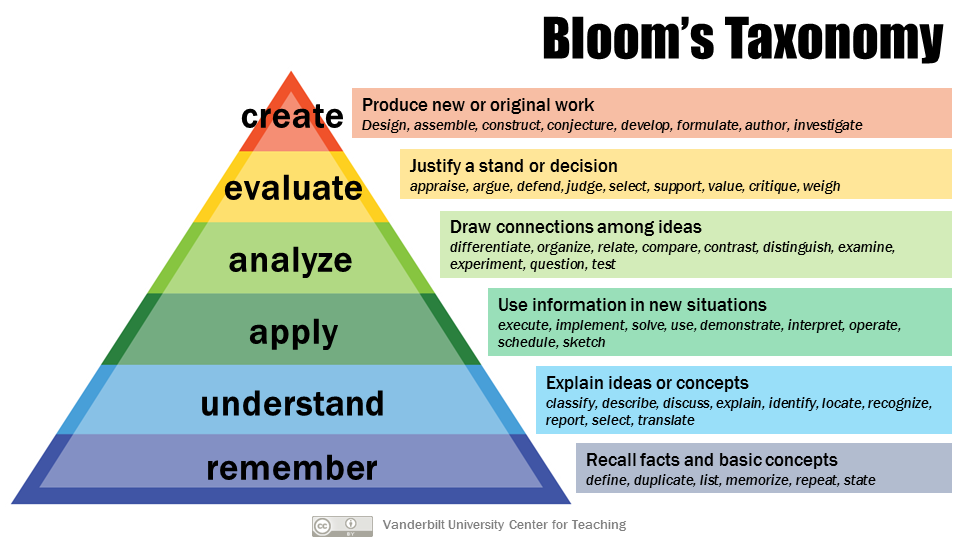By Deborah Ottman
So, you’re developing a new online learning resource for adults! Maybe this is a standard part of your job, or maybe it’s a replacement for in-person options during the coronavirus outbreak. In this first in a series of blog posts, Deborah Ottman, Associate Director of Professional Development, gives an overview of what you need to know before you start writing the syllabus or recording video lectures. This guide is aimed at subject matter experts—the people who’ll be sharing their knowledge and skills through online learning resources.
Designing an online course starts with exploring three essential questions. Starting this from scratch can be a bit daunting, but don’t rush through this step. The more thoroughly you can answer these three questions, the better your product will be.

Question 1. What is the goal of the course?
The course goal is a general statement of what students are intended to learn. It might help to think about what prompted you to create the course in the first place. What need is it filling? For example, the goal of the course might be to teach biomedical engineers how to use a new 3D modeling software. Or the goal might be for staff at a health clinic to understand HIPAA regulations. The goal should be achievable, but not necessarily measurable. (Determining measurable outcomes comes a bit later in the design process.)
Adult learning theory tells us that students respond best to course goals that unite practical utility and personal benefits for the learner. It may help to picture a student asking the guiding question “What’s in it for me?” when crafting the course goal.
Here are a few examples of course goals:
- Students will understand adult learning theory.
- Students will learn the fundamentals of effective survey design
- Students will use InDesign to create a brochure.
Question 2. Who is your audience?
Consider the level of knowledge learners will likely bring with them to the course. Then think about the knowledge they’ll need to succeed in the course. For example, is there a specialized lexicon they’ll need to be familiar with? What scaffolding might the course need to include to get learners from what they already know to where they need to be?
Also consider potential learning barriers or challenges for learners. How much time will they have to spend on your course? What is a reasonable workload? What technology will they be using, and how familiar will they be with it to start? What are their real-world application opportunities for the content going to be?
Question 3. What do the students need to learn?
This is where the rubber of online learning design really hits the road: specifying the knowledge and skills that learners need to gain from the course. We call these learning objectives. Each learning objective should focus on a specific skill or piece of knowledge. And each should clearly support the overall course goal. But unlike the course goal, which is a broader statement of purpose, the learning objectives should be measurable. Students should be able to show that they have acquired the needed skills and knowledge.
One helpful tool when sketching out learning objectives is Bloom’s Taxonomy. This framework outlines six levels of learning: Remember, Understand, Apply, Analyze, Evaluate, and Create. The first tier–Remember–reminds us that a learner needs to know certain basic facts and concepts before he or she can progress to more sophisticated skills and abilities.

As you select content for your course—videos, articles, discussion prompts—make sure that each item ties into a learning objective (or objectives). If the connection isn’t obvious, ask yourself if the content item belongs in the course.
Here are examples of learning objectives from one of CEED’s online courses, Challenging Behavior in Early Childhood: Bridging Educational and Mental Health Strategies for Child-specific Interventions.
Students will:
- understand typical social/emotional development
- learn fundamental terminology associated with the field
- compare and contrast different theoretical explanations of children’s challenging behavior
- describe the philosophies and theories associated with the BEAM module
- explore relationships between teachers, their colleagues, and the families they work with
- know how to use several tools to support emotional literacy
- examine functional behavioral assessment, including processes for gathering and summarizing information
A quick Google search will likely turn up many interesting examples of course goals and objectives in your subject area for inspiration.
So, you’ve answered the three questions—What is the goal of the course? Who is your audience? What do the students need to learn?—and you’ve perfected your course objectives. The rest will practically write itself! Okay, not exactly. But stay tuned for the next post in this series. We’ll explore how the work you’ve done will provide a solid foundation for the next step: finding the flow.



